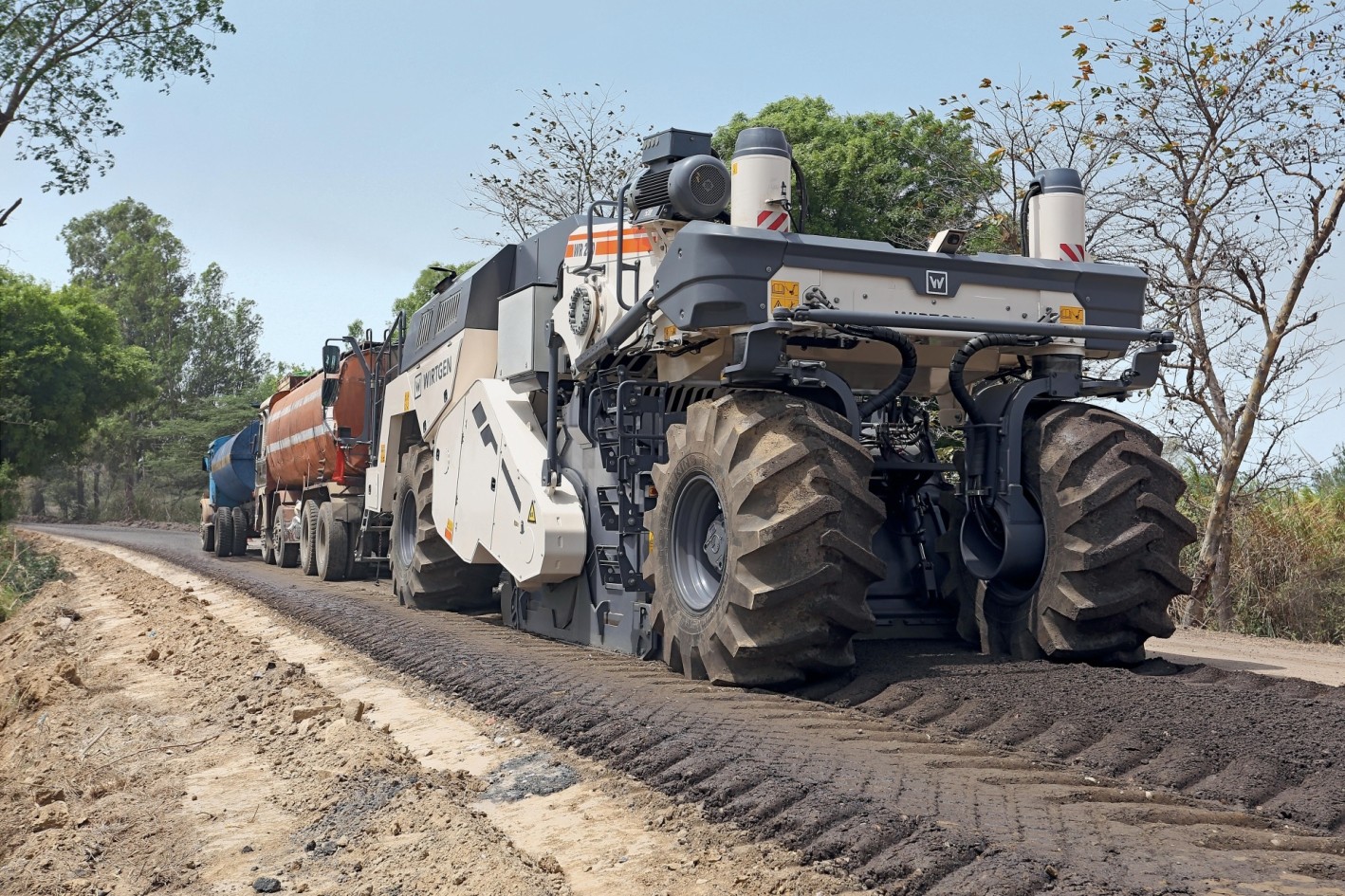Operating Principle of In-Situ Cold Recycling


The WR is equipped with a powerful milling and mixing rotor as well as state-of-the-art injection systems. The cold recycler uses the milling and mixing rotor to mill asphalt pavements, granulates them, sprays binder and water in precisely measured doses, and mixes it all together in a single operation. The new base layers produced on site then stand out thanks to their exceptional bearing capacity.
To produce a cement-treated base layer, a Streumaster binding agent spreader first spreads a layer of cement, followed by a water tanker. The WR’s powerful milling and mixing rotor granulates the damaged layers. At the same time, cement and sprayed water are mixed in. While a grader carries out the fine profiling of the homogeneous building material that has been prepared, various HAMM rollers compact it.
A Streumaster binding agent spreader dispenses small quantities of cement, followed by a water tanker and an emulsion tanker. The WR’s powerful milling and mixing rotor granulates the damaged layers. At the same time, the pre-spread cement is mixed in and emulsion and water are sprayed into the mixing chamber via two separate microprocessor-controlled injection bars. While a grader carries out the fine profiling of the homogeneous building material that has been prepared, various HAMM rollers compact it.
A bitumen tanker truck leads the way, followed by a slurry mixer. Bitumen tankers and slurry mixers supply the WR 240/WR 240i, WR 250 with the binding agents necessary to process the pavement in need of rehabilitation. The recycler’s powerful milling and mixing rotor granulates the damaged layers. At the same time, foamed bitumen and water-cement slurry are sprayed in via two microprocessor-controlled injection bars. While a grader carries out the fine profiling of the homogeneous building material that has been prepared, various HAMM rollers compact it.
The WIRTGEN WR series features a wide range of different models to suit every soil stabilization and cold recycling application.
View Soil Stabilization